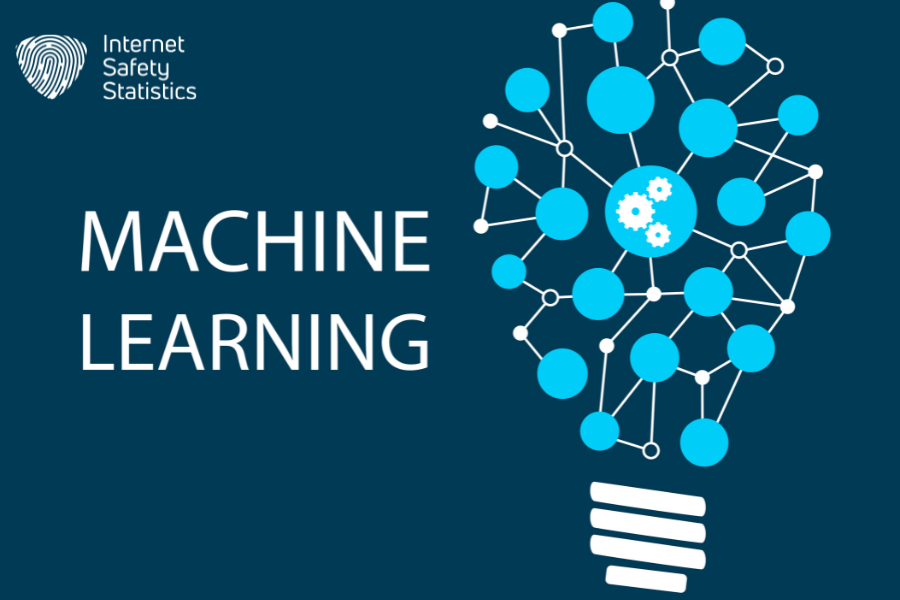
Machine learning in cybersecurity is becoming increasingly critical as the digital landscape teems with evolving threats. As our reliance on technology expands, so too do the dangers posed by cybercriminals who continuously refine their tactics, targeting individuals, businesses, and critical infrastructure. Traditional security solutions often struggle to keep pace with this shifting landscape.
This is where machine learning (ML) steps in. A powerful arm of Artificial Intelligence (AI), ML allows computers to learn and adapt without explicit programming. From healthcare to finance, ML has revolutionised diverse fields by analysing vast datasets to identify patterns and make predictions. This ability to learn and adapt makes ML a valuable tool in the fight against cyber threats, offering a dynamic and adaptable approach to security.
Machine Learning Fundamentals

Machine learning (ML) plays a crucial role in contemporary cybersecurity, offering a dynamic and adaptable approach to security in today’s ever-evolving threat landscape. To understand its effectiveness, a basic grasp of core ML concepts and algorithms is essential.
Learning Strategies: Supervised, Unsupervised, and Reinforcement Learning
ML operates through different learning strategies, each suited to specific tasks.
Supervised Learning
Imagine learning with a helpful teacher, Supervised learning algorithms are trained on labeled data sets. These datasets hold both the inputs (e.g., email content) and the corresponding desired outputs (e.g., “spam” or “not spam”). By analysing this data, the algorithm learns the relationship between inputs and outputs, allowing it to make predictions for unseen data. For example, a supervised learning algorithm can be trained to detect malicious emails by analysing a vast dataset of labeled emails.
Unsupervised Learning
This method resembles learning independently, without a teacher’s guidance. Unsupervised learning algorithms are presented with unlabeled data, tasked with identifying patterns, structures, or groupings within it. For instance, an unsupervised learning algorithm might analyse malware samples, identifying clusters of similar samples based on their characteristics, even without explicit labels like “malware” or “benign.”
Reinforcement Learning
This approach involves learning through trial and error, similar to how we learn by exploring the world around us. In this scenario, an “agent” interacts with an environment, receiving rewards or penalties for its actions. Its objective is to maximise its cumulative reward by learning through this feedback. In cybersecurity, reinforcement learning can be used to train a system to detect network intrusions by allowing it to explore and learn the best defense strategies through simulation.
The Role of Algorithms in Machine Learning
Algorithms are the workhorses of machine learning, acting as the engines that learn and make predictions based on data. Here’s an overview of three key algorithms:
Decision Trees
Imagine a branching flow chart where each decision leads to a different outcome. Decision trees work similarly, creating a tree-like model with decisions and their potential consequences. They can be used for various tasks, including classifying data (e.g., is this file malicious?) or predicting outcomes (e.g., what’s the likelihood of a specific network activity being an attack?).
Neural Networks
Inspired by the structure and function of the human brain, neural networks consist of interconnected “neurons” arranged in layers. These complex systems excel at tasks like image recognition and natural language processing, making them valuable tools in cybersecurity. For example, a neural network can be trained to detect phishing websites by analysing visual images of web pages or deciphering their textual content, helping to thwart malicious attempts.
Support Vector Machines
Imagine drawing a line that best separates two different groups of points. This is the essence of support vector machines (SVMs). They find a hyperplane, which can be a line, plane, or even a higher-dimensional space, that best divides different classes of data. This makes SVMs effective for classification tasks in cybersecurity, such as categorising network traffic as normal or anomalous for intrusion detection.
Remember, the choice of algorithm depends on the specific cybersecurity task at hand, the nature of the data being analysed, and the desired outcome. As the field of machine learning in cybersecurity continues to evolve, we can expect even more sophisticated algorithms and techniques to emerge, further strengthening our defenses against ever-changing cyber threats.
Machine Learning Applications in Cybersecurity: A Powerful Ally

Machine learning’s ability to learn and adapt makes it a powerful weapon in the fight against cyber threats. Here’s a glimpse into some of its key applications:
Threat Detection and Prevention: Proactive Defense Strategies
Machine learning empowers proactive defenses by continuously monitoring and analysing data to identify potential threats before they cause harm. This involves techniques like:
Anomaly Detection
This technique utilises machine learning to identify unusual patterns or deviations from established norms in network traffic, system activity, or user behavior. By learning the “normal” patterns, the algorithm can flag any significant deviations as potential threats, allowing for prompt investigation and mitigation.
Behavioral Analysis
This approach goes beyond simply identifying anomalies. It delves deeper into analysing user and system behavior by learning their typical patterns. Any significant or suspicious deviations from these established patterns, such as unusual file access attempts or excessive login failures, can be flagged for further investigation, potentially uncovering malicious activity.
Signature-Based Detection
This traditional method utilises predefined signatures, which are unique identifiers of known threats, to detect malware and other malicious activities. While effective for known threats, it struggles to identify novel attacks or variants. Machine learning can be integrated with signature-based detection to enhance its capabilities. For instance, an ML algorithm can analyse data to identify similarities with known malware signatures, even if the specific signature is not yet in the database.
Malware Detection: Identifying and Thwarting Malicious Software
Machine learning plays a crucial role in identifying and thwarting malicious software (malware) by:
ML-Based Anti-Malware Solutions
Traditional anti-virus software relies on signature-based detection, which has limitations. Machine learning-powered anti-malware solutions go beyond these limitations. They can analyse various factors, such as file behavior, network activity, and code characteristics, to identify even new and unknown malware variants. This allows for more comprehensive protection against evolving threats.
Predictive Modeling for Malware Identification
Machine learning can be used to develop predictive models that analyse vast amounts of data to identify emerging malware trends and potential future threats. By anticipating the tactics and characteristics of evolving malware, organisations can proactively improve their defenses and stay ahead of the curve.
User Authentication and Access Control: Strengthening Defenses
Machine learning bolsters user authentication and access control by offering more robust and adaptable solutions:
Biometric Authentication
This approach relies on unique biological characteristics, such as fingerprints, iris scans, or facial recognition, to verify user identity. Machine learning can enhance the accuracy and efficiency of biometric authentication systems by learning individual user patterns and adapting over time.
Adaptive Access Control
Traditional access control systems often follow a static approach, granting or denying access based on predefined rules. Machine learning can enable adaptive access control, where access decisions are made dynamically based on various factors like user behavior, device characteristics, and real-time threat intelligence. This provides a more secure and flexible approach to access control, adapting to changing risk profiles and potential threats.
These are just a few examples of how machine learning is revolutionising the cybersecurity landscape. As the field continues to evolve, we can expect even more innovative applications and advancements, empowering us to stay ahead of cyber threats and safeguard our digital world.
The Benefits of Integrating Machine Learning in Cybersecurity
The integration of machine learning (ML) offers a multitude of benefits, significantly enhancing our ability to combat cyber threats. Here are some key advantages:
Improved Threat Detection Accuracy
Traditional security solutions often rely on predefined rules or signatures, limiting their ability to detect novel threats. ML, with its ability to analyse vast amounts of data and identify complex patterns, surpasses these limitations. It can effectively detect anomalies, even subtle deviations not readily apparent to traditional methods, leading to significantly improved threat detection accuracy. This allows for faster identification and mitigation of potential attacks, minimising potential damage.
Real-Time Response to Security Incidents
Cyberattacks often unfold rapidly, demanding swift response to minimise damage. ML’s ability to learn and adapt in real-time makes it ideal for this fast-paced environment. ML-powered security systems can continuously analyse data streams, identify emerging threats in real-time, and trigger automated response actions. This significantly reduces the time it takes to respond to an attack, effectively containing and mitigating its impact.
Adaptive and Self-Learning Capabilities
The cyber threat landscape is constantly evolving, with attackers adopting new tactics and developing novel malware variants. Traditional security solutions often struggle to keep pace with this constant change. ML, however, offers a distinct advantage through its inherent self-learning capabilities. By continuously analysing data and adapting to new information, ML-powered security systems can automatically learn and improve their ability to detect and respond to evolving threats. This dynamic approach ensures they remain effective even against sophisticated and constantly changing cyber threats.
Incorporating ML into cybersecurity strategies brings a multitude of benefits, leading to more accurate threat detection, faster response times, and superior adaptability to the ever-evolving threat landscape. As ML continues to evolve and refine its capabilities, we can expect even greater advancements in securing our digital world.
Challenges and Considerations: Navigating the Roadblocks of ML in Cybersecurity
While machine learning (ML) offers immense potential in the fight against cyber threats, it’s crucial to acknowledge the challenges and considerations associated with its integration:
Data Privacy Concerns
ML algorithms require vast amounts of data to learn and function effectively. However, concerns arise regarding the potential violation of individual privacy while collecting, storing, and utilising such data. Implementing robust data governance practices and ensuring user consent, anonymisation, and secure data handling are crucial for responsible deployment of ML in cybersecurity.
Adversarial Attacks on ML Models
Cybercriminals may attempt to exploit vulnerabilities in ML models by manipulating data or crafting targeted attacks designed to fool the system. This is known as an adversarial attack. To mitigate this risk, it’s vital to develop robust ML models that are resilient to such attacks and continuously monitor and update them to address potential vulnerabilities.
Resource Intensiveness
Running and maintaining ML-powered security systems can be resource-intensive, requiring significant computational power, storage capacity, and expertise. Organisations need to weigh the benefits against the costs and ensure they have the necessary infrastructure and technical expertise to effectively implement and manage ML-based solutions.
Addressing these challenges is crucial for maximising the benefits of ML in cybersecurity. By promoting data privacy, strengthening model security, and optimising resource utilisation, we can ensure responsible and sustainable development of this powerful technology, creating a safer digital landscape for all.
Ongoing Research and Development
Here’s a breakdown of ongoing research and development in the field of ML-based cybersecurity solutions, along with key areas of interest:
Adversarial Machine Learning and Robustness
- Understanding Vulnerabilities: Researchers are actively exploring potential vulnerabilities of ML models themselves, seeking to understand how adversaries might exploit these weaknesses to mislead cybersecurity systems.
- Adversarial Attacks and Defenses: Developing strategies for crafting adversarial examples aimed at fooling ML-powered detection systems. Simultaneously, they are focusing on creating more robust ML models that can withstand these crafted attacks and minimise false alerts.
- Real-World Implications: This research is crucial for preventing real-world attacks designed to circumvent sophisticated, ML-based security solutions.
Explainable AI (XAI)
- Beyond the “Black Box”: Researchers are working on developing techniques to explain the decision-making process behind ML models. This will make them more transparent, fostering trust and improving auditability.
- Debugging and Bias Detection: Explainable ML techniques will help developers and security personnel identify hidden biases within models, ensuring fairness and preventing potential discrimination in decision-making processes.
- Practical Applications: XAI is expected to play a crucial role in enabling effective human oversight, making models more readily applicable to security contexts where explainability is critical.
AI Integration for Comprehensive Defense
- Beyond ML alone: Exploring how ML can be integrated with other AI techniques like natural language processing and computer vision for a multifaceted cybersecurity approach.
- Threat Intelligence Platforms: Building centralised threat intelligence platforms leveraging ML for continuous analysis, correlation, and sharing of data between systems.
- Automated Response Systems: Research into developing ML-powered autonomous systems capable of analysing complex threat scenarios and automatically orchestrating appropriate responses for increased efficiency.
Focus Areas for Development
- Anomaly Detection in Complex Environments: Research aims to advance ML-based anomaly detection capabilities in complex ecosystems like rapidly evolving IoT landscapes or large-scale enterprise networks.
- Early Warning Systems: Developing models with capabilities to recognise early signs of potential cybersecurity threats, allowing organisations to take preemptive action.
- User Behavior Analytics: Exploring how to combine ML with behavioral analytics to identify subtle deviations from typical user behavior that could indicate malicious activity, insider threats, or compromised accounts.
Implications
Ongoing research in these areas has the potential to fundamentally reshape the cybersecurity landscape. This progress will result in:
- More robust and adaptable defenses that can counter increasingly sophisticated threats.
- Improved explainability and transparency for critical decision-making processes.
- Increased automation and efficiency in threat detection and response, mitigating human error and saving time.
Potential future applications of ML in Cybersecurity
As research delves deeper into the potential of machine learning (ML) in cybersecurity, exciting possibilities emerge for the future. Here are a few potential applications pushing the boundaries of this dynamic field:
Advanced Threat Prediction
- Threat Forecasting: ML algorithms could analyse vast amounts of historical data and real-time threat intelligence to predict potential attack patterns and emerging threats. This proactive approach would allow organisations to anticipate and preemptively bolster defenses, allocating resources effectively to counter future threats before they materialise.
- Zero-Day Vulnerability Detection: ML models trained on vast datasets of known vulnerabilities could learn to identify patterns in new software and code, potentially uncovering previously unknown vulnerabilities (“zero-day threats”) that haven’t yet been patched. This would empower defenders to address these vulnerabilities before they can be exploited by attackers.
Personalised Defense Strategies
- User Behavior Modeling: By analysing user behavior patterns, ML could create personalised security profiles. This would allow for dynamic adjustments to security protocols based on individual user risk profiles, potentially implementing stricter security measures for high-risk users while streamlining processes for low-risk users.
- Adaptive Risk Management: ML can dynamically adjust security measures based on real-time factors such as user location, device type, and network activity. This personalised approach would optimise security without sacrificing user experience or hindering legitimate activities.
- Context-Aware Security: ML could analyse the broader context surrounding potential threats, including the type of data being accessed, the user’s role, and the specific applications being used. This contextual understanding would allow for more nuanced security decisions, preventing unnecessary disruptions while effectively mitigating genuine threats.
Conclusion
As the sophistication and frequency of attacks continue to rise, traditional security solutions struggle to keep pace. By leveraging the power of ML, we can unlock proactive defenses, enhance threat detection, and build adaptable security strategies that can evolve alongside the threat landscape.
The ongoing research and development in areas like advanced threat prediction, personalised defense strategies, and integration with other AI technologies promises to further revolutionise cybersecurity. However, it’s vital to acknowledge the ethical considerations and potential limitations associated with ML. By fostering responsible development, transparency, and robust data security practices, we can harness the full potential of ML while safeguarding our digital world for a safer future.
Therefore, embracing ML and its evolving applications is no longer simply an option, but a necessity for organisations and individuals alike as we navigate the ever-changing digital landscape. By actively adapting and integrating these advancements into our cybersecurity strategies, we can build a more resilient and secure future for all.
